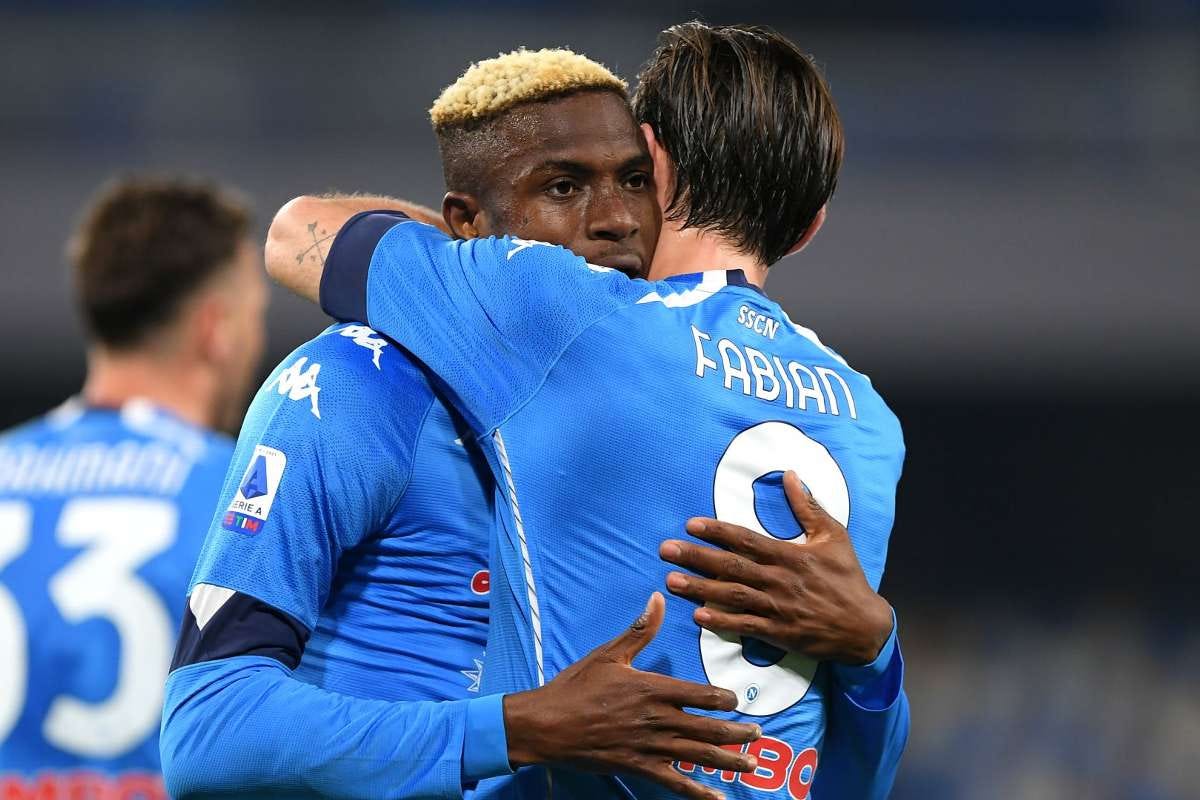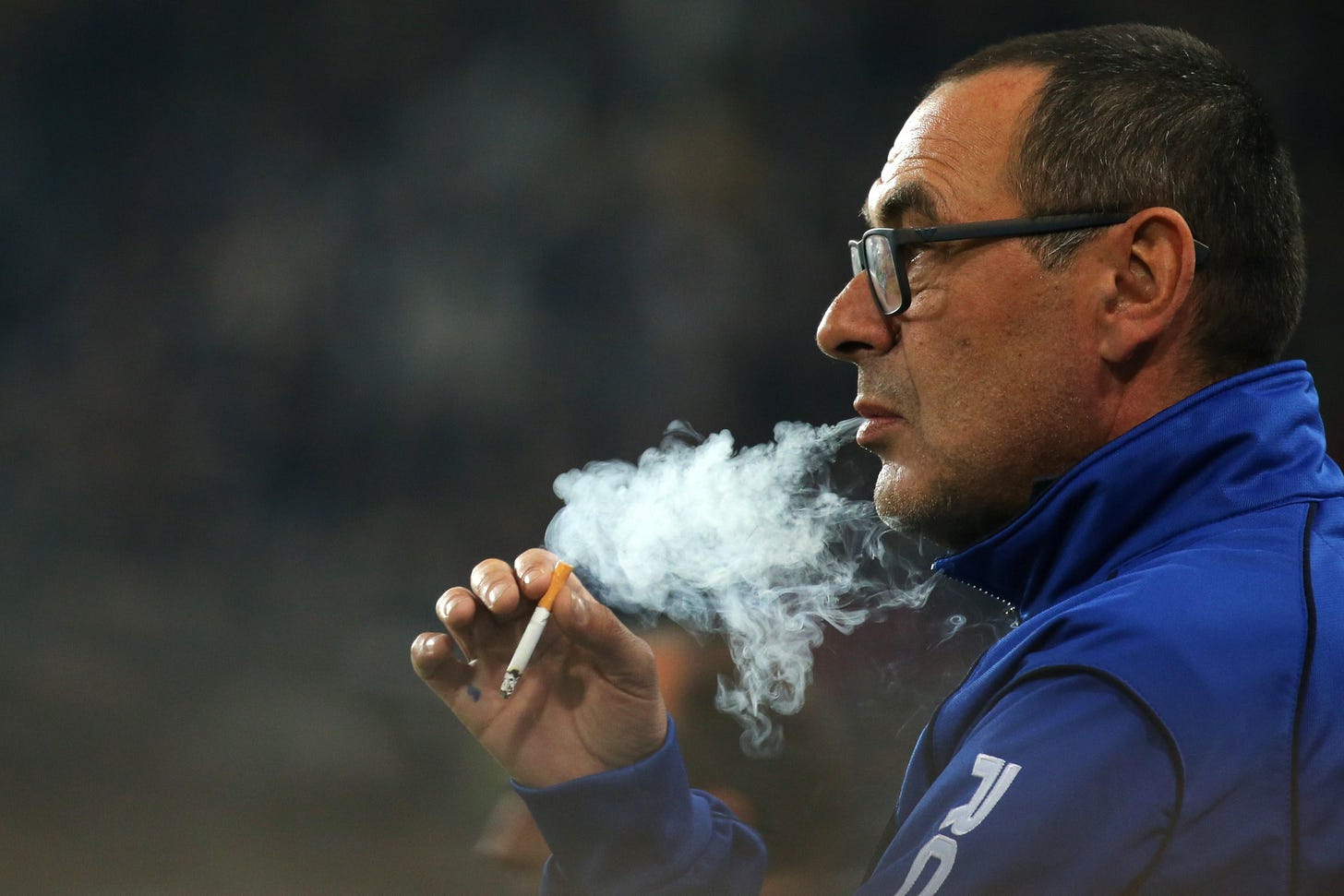Napoli are learning to need Victor Osimhen
...as the Exorcism of Maurizio Sarri continues apace
Last term, despite grappling with injuries, illness and general misfortune, Victor Osimhen scored 10 goals for Napoli in all competitions. For such a deeply troubled season, a fairly decent tally.
However, it often felt like he simply was not there.
Of course, in the most literal terms, he wasn’t a lot of the time. He started less than 50 per cent of matches in the league, missing 13 altogether. However, even when he did play, he spent much of the time on the periphery, haunting opposing defences by flicking light switches and causing chairs to levitate, but ultimately being about as threatening as the Maitlands in Beetlejuice.
Here’s a stat for you: despite the fact Napoli won every game (bar one: a 1-1 draw with Cagliari) in which he scored, only two of Osimhen’s 10 goals in 2020/21 were the game’s opener: in the away win at Bologna in Week 7, and the home draw with Cagliari in Week 34.
Why is that significant? Well, as we know, football is a low-scoring sport in comparison to pretty much every other team discipline. Score first, and you stand a healthy chance of winning the game—a seven-year Premier League study, which ended in 2016, found that the team that scored the first goal in a match went on to win almost 70 per cent of the time on average. As such, the opening goal is particularly valuable for its predictive quality, as well as its effect on the final result. All goals really are not created equal.
The opening goal also conditions the rest of the match, as it presents the losing side with an imperative: they have to attack and, as we know, that leaves space behind which can be exploited. The side in the lead can therefore adopt a less aggressive stance and seek to play into that space.
Clearly, Napoli did not have a problem striking the first blow without Osimhen’s input last term. At times, it felt like they did not, strictly speaking, need him on the pitch. They played like it too at their most fluent, often ignoring runs and looking away when he called for the ball to be played early, forlorn as the play eddied around him. With arms that long, there’s no way they could have failed to spot him, right?
While some of it was chalked up to selfishness by most observers, I believe there was something a little deeper at work. It is my theory that, when Maurizio Sarri departed San Paolo, he left something behind besides the lingering whiff of tobacco on the dressing room walls. He left the essence of a footballing style that clung to the soul of the club like an alien symbiote. How’s that for elementary, Watson?
To define Sarriball in the simplest sense, it was about the build-up, circuits (writing in The Times, journalist Gabriele Marcotti referred to the “endless repetitions” that defined his training methodology) and movement off the ball. His Napoli side took playing out with short passes to sometimes quite ludicrous lengths, with the object being to draw opponents as far forward as was possible, before exploding into the space behind the pressure.
For those he left behind after three years, it was not just a neat tactical idea. It fundamentally altered their literal vision on (and of) the pitch. “Sarri has transferred to us his way of understanding football,” said Dries Mertens. Kalidou Koulibaly gushed over his depth of knowledge of the game: “Sarri makes you understand how football is and isn’t unpredictable. In short, with Sarri, football is maths.”
Since his departure in 2018, Napoli have essentially been playing on muscle memory in their passing patterns, but have slowly lost the intensity from Sarri’s training ground rigour. That the club hired first Carlo Ancelotti, a manager whose problem-free philosophy – and possible preference of slimy over crunchy – jars markedly with the idea of Sarrismo, and then Gennaro Gattuso (who just jars) as replacements paints a picture: no one had come along since capable of exorcising the smoke poltergeist.
So it was that, most of the time last season, Napoli prioritized short, patient build-up, but without the sudden change of tempo to burst past pressure and release the forwards into space. A form of Sarrismo without the power thereof. Their superior quality meant that, against most opponents, it worked – they would take the lead playing a style that basically rendered their club record signing superfluous. However, when they went ahead and the spaces opened up, then the 22-year-old suddenly materialized into view, finally able to run onto more direct passes as the rest of the team, secure in their lead, used him to relieve pressure on the break.
Things may be looking up this season, however. I say “may” because a five-game sample size is a small one, but already the split between opening goals and non-opening goals (2-3) is a little closer to even. What’s different? Well, Napoli finally have, in Luciano Spalletti, a manager who has a defined tactical and attacking framework of his own.
Sure, he’s no maniac like Sarri. Few are. But he does, at least, want a quicker attack, and he encourages greater verticality. Crucially, he is committed to getting the best out of Osimhen, and has the track record to prove he knows how.
There remain moments of frustration, of course. There is also the sense still that, in terms of personality and style, Osimhen is not quite made from the same material as the rest of the attackers at the club, focused as they are on creating shots for themselves. However, perhaps that is a good thing: on days when the tension between returning to the comfort of the familiar and embracing something new causes the Parthenopeans to freeze in ash, the Nigeria international allows them to play while broken.
“Sampdoria pounced on us from the start, and that left huge gaps behind their defence,” Spalletti said of their most recent victory, a 4-0 demolition of the Blucerchiati. Interestingly, in that match, Napoli played 61 long passes, higher than their seasonal average of 44. “In those situations, Osimhen is devastating.”
Slowly but surely, the Sarri fog is clearing and Napoli are learning how to need their star centre-forward.
Thank you for reading Chaos Digest. If you enjoyed this post, do consider subscribing to receive subsequent newsletters in your email.







Beautiful
Excellent, insightful piece!